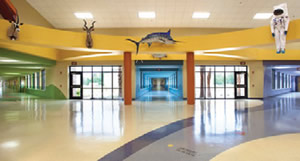School District Makes Paper A Thing of the Past

Since implementation, roughly 90 percent of Bulloch’s
personnel forms have gone completely paperless, including
new employee documents. Paper is now a thing of the past.
Bulloch County Schools,
located in southeast Georgia, was
in search of a new accounting
solution, as well as a better way to manage
documents. The district had so many paper
files they were shipping boxes to an off-site
warehouse, resulting in a time-consuming
process to find and access records.
With Softdocs, the district greatly
reduced time spent managing document-based
tasks and eliminated many of the
errors that used to plague the business
processes in their finance and HR departments
— all while staying within budget.
“Before Softdocs, we would have to ship
boxes and boxes of paper to our warehouse,”
says Troy Brown, Bulloch’s chief financial
officer. “And every time we needed to look
at an archived document, we’d have to drive
out to the warehouse, get dirty from head-to-toe and dig out the right piece of paper.
Now, everything is automated and electronic
content management capture, storage and
retrieval is automated.”
In addition, another improved business
process is employee reimbursement.
Previously, it would take days just to get all
the data to the district office for approval,
and even longer for the check to be cut and
sent back to the employee. Now, employees
can attach scanned receipts and invoices
directly to the reimbursement form in Softdocs
and it is sent to the reimbursement
personnel within minutes.
Since implementation, roughly 90
percent of Bulloch’s personnel forms have
gone completely paperless, including
new employee documents. Paper is now a
thing of the past.
Adds Brown, “Whenever we hire a
new employee, there are countless forms
employees have to complete for HR and
payroll. But with Softdocs, employees can
log on and fill everything in electronically,
then immediately send it through the
workflow for approval. Once it’s approved,
Softdocs picks it up and archives everything
in the system.”
www.softdocs.com
This article originally appeared in the issue of .